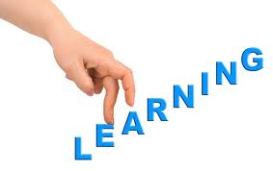 We all know about how the British cycling team made a series of small changes to their training and processes in order to achieve great success in the Olympics. This is also reflected in Sir Clive Woodward’s approach to English rugby when he talked about the critical non-essentials. Basically, small but significant changes or improvements when applied and combined with other such improvements can have massive effects on performance, or in the case of education, student progress.
We all know about how the British cycling team made a series of small changes to their training and processes in order to achieve great success in the Olympics. This is also reflected in Sir Clive Woodward’s approach to English rugby when he talked about the critical non-essentials. Basically, small but significant changes or improvements when applied and combined with other such improvements can have massive effects on performance, or in the case of education, student progress.
I have implemented a series of small but critical changes to my teaching and classroom this year. Student progress, both rate and level will be my gauge to the impact of these changes. So here are my current critical non-essentials;
- One to one tuition once a fortnight for each year 13 student
Each of my year 13 students have slightly different needs. They are each sitting one grade above their target grade. They need to continue to believe that they can maintain this, they need to have personalised feedback, essay support and extension challenges. I hope by taking time to invest in them as individuals they will be encouraged to continue working hard, knowing they can’t hide!
- The language of marking
I want to develop in my students a growth mindset. See http://mindsetonline.com/whatisit/about/index.html One way I hope to do this is by subtly adjusting the language I use in my written feedback as well as the verbal feedback in the classroom. For example;
“Through hard work you have made excellent progress during this lesson”
“Your willingness to take a risk and work hard at a higher level has helped you to get nearer to meeting the success criteria”
“The great effort that you put into this task means that this is a good quality piece of work”
I want them to associate hard work with progress and risk taking as steps towards success rather than believing their innate ability, or lack of it, is the key to their progress.
- Introducing solo taxonomy and allowing students to identify and work at a level that is appropriate to them.
I want my students to be engaged in understanding their learning and recognising how to progress. Solo means the work in the class is differentiated and that competence in work is valued rather than speed of completion. Students take ownership of their learning and have opportunity to support each other. Someone at uni-structural level may go and sit alongside someone at multi-structural level to get some help. For more info on solo have a look at http://www.learningspy.co.uk/solo-taxonomy/
- The environment
Sir Clive Woodward insisted on the rugby changing rooms being plastered and painted, a critical non-essential. I want to ensure that my classroom ‘speaks’ to my students when they are in it. I am currently making use of great Fail Safe resources from sparky teaching http://www.sparkyteaching.com
None of these four things on their own are likely to radically change the progress of the students that I teach, some may have more impact than others, but together I hope that they will bring about great improvements.
Please do tweet me if you have other minimal changes that you think I could implement that would continue to bring about great improvements.
